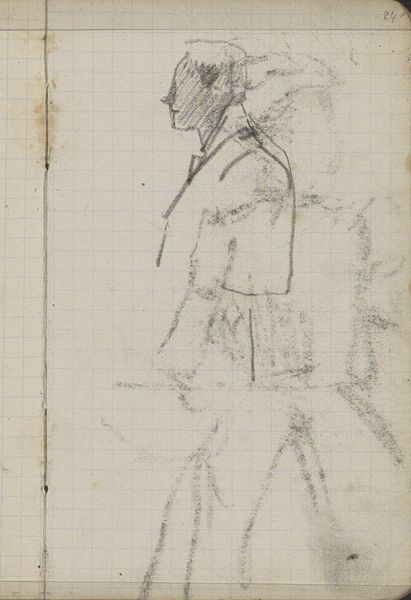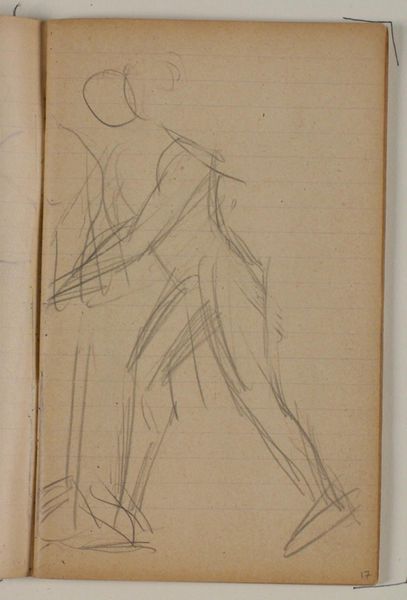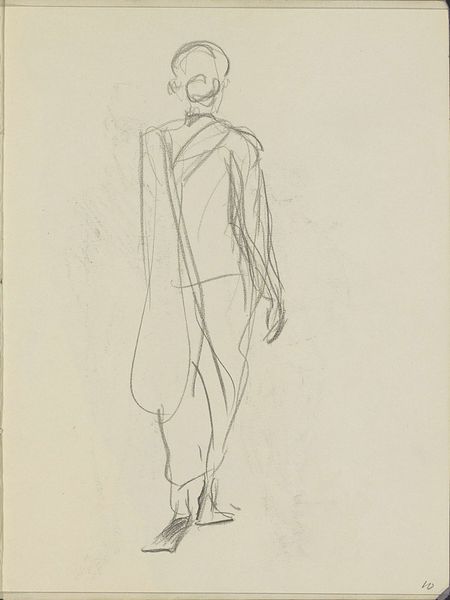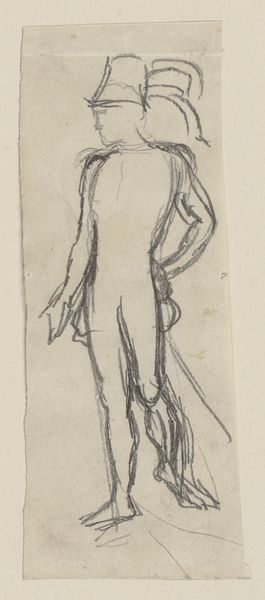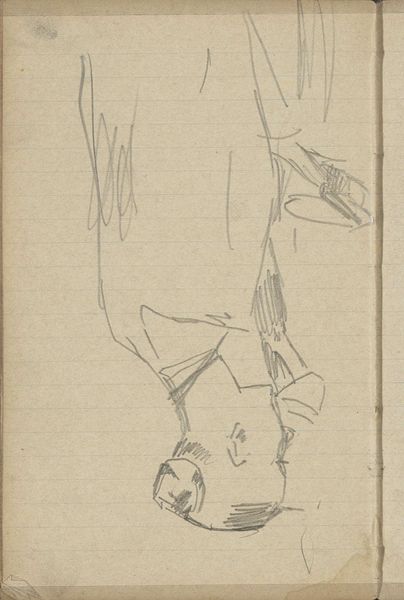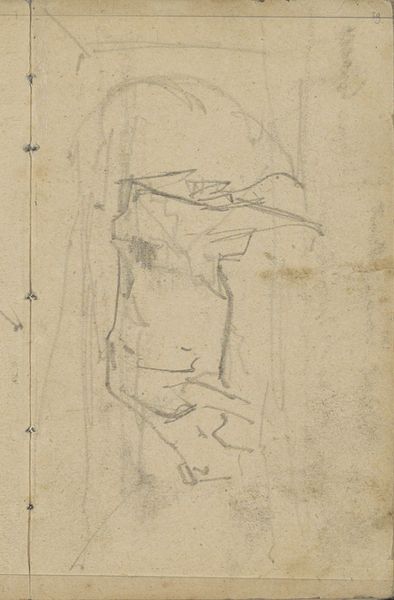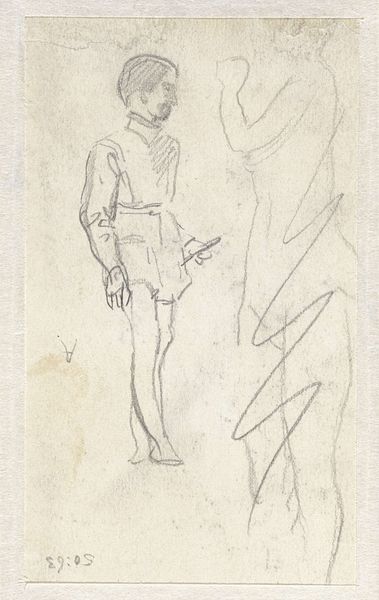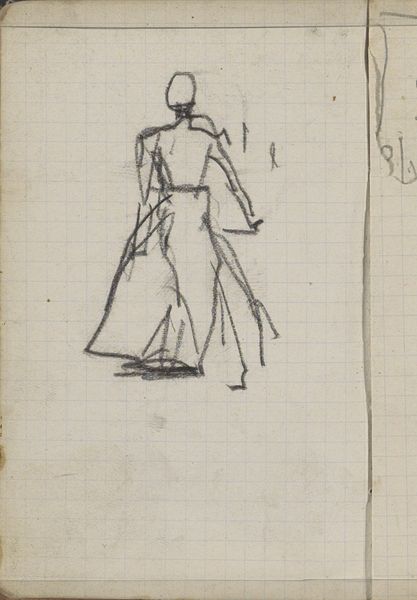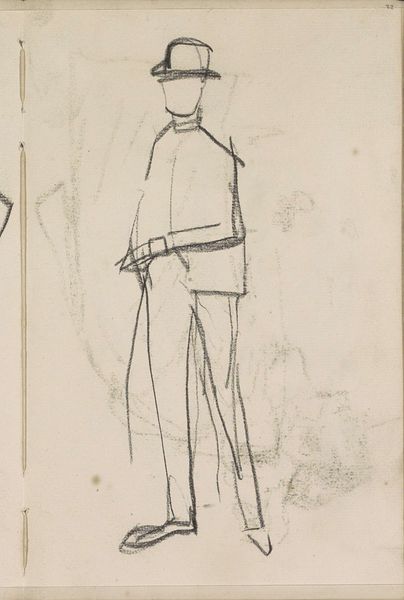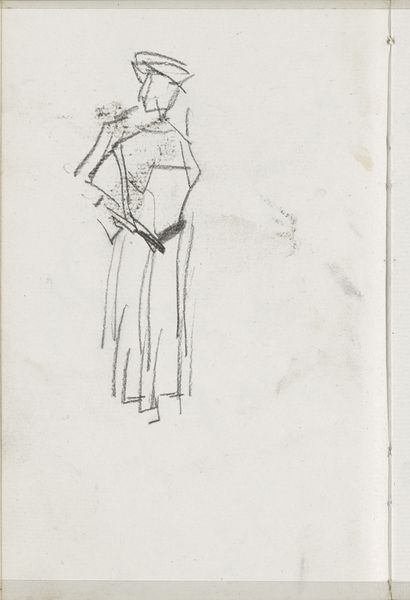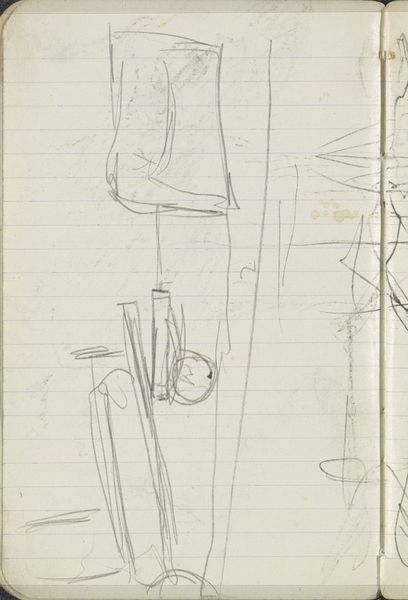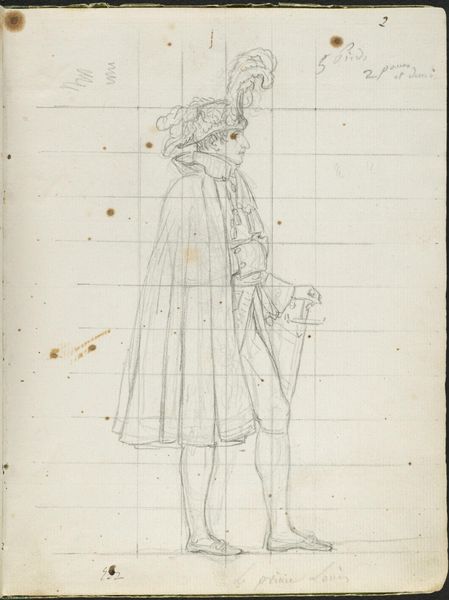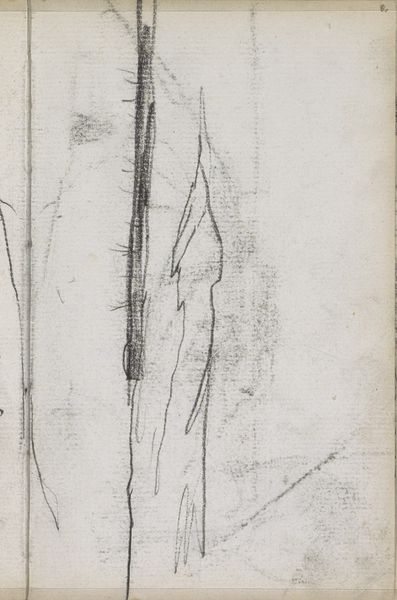
#
toned paper
#
light pencil work
#
quirky sketch
#
personal sketchbook
#
idea generation sketch
#
sketchwork
#
sketchbook drawing
#
storyboard and sketchbook work
#
sketchbook art
#
initial sketch
Dimensions: height 166 mm, width 99 mm
Copyright: Rijks Museum: Open Domain
Curator: Here we have George Hendrik Breitner's "Standing Woman, Seen From the Back," created in 1888. It's a light pencil sketch on what appears to be toned paper. Editor: There's a casual, almost fleeting quality to it. You can almost feel the artist quickly capturing a figure that caught his eye. The thin lines, the visible notebook paper... it feels very immediate, raw. Curator: Absolutely. Breitner was known for capturing modern life, and sketches like this provided source material for his larger paintings. The woman, rendered anonymously from the back, speaks to the increasing urbanization and the detachment that can come with it. She is an observer, an everywoman absorbed in her own existence in a rapidly changing city. Editor: What's fascinating is how little he needed to suggest her presence. It's all about economy of line and shadow. The weight of the skirt, the curve of her back—those details suggest a life, a weight to her presence, beyond the paper itself. And this was from his sketchbook— it gives it an element of production that makes you appreciate his work on paper just as much. Curator: The Rijksmuseum is fortunate to have a collection of Breitner's sketchbooks; it shows us Breitner’s unique methods as it was quite unusual to put sketchbooks on public display in that era. These sketches weren’t necessarily considered final products, but crucial steps in his artistic process. This specific work gives us incredible insights into how urban life was interpreted during a transitional period. The muted color palette certainly enhances the sense of early industrial atmosphere that pervaded the cities in his lifetime. Editor: And there is beauty to the lack of finish, you know? I admire that it allows the materiality to almost show through; it avoids preciousness and celebrates his production, especially since its placement on something like what seems to be notepaper defies conventional ideas of art materials. It’s quite daring. Curator: I find it incredible how such simple material, a humble pencil and paper, gives such context to how quickly society itself shifted. Editor: Right. And for me, its inherent material modesty paradoxically makes this particular piece more powerful.
Comments
No comments
Be the first to comment and join the conversation on the ultimate creative platform.
